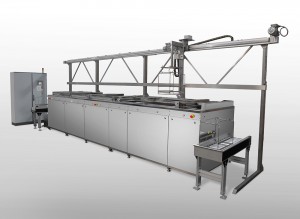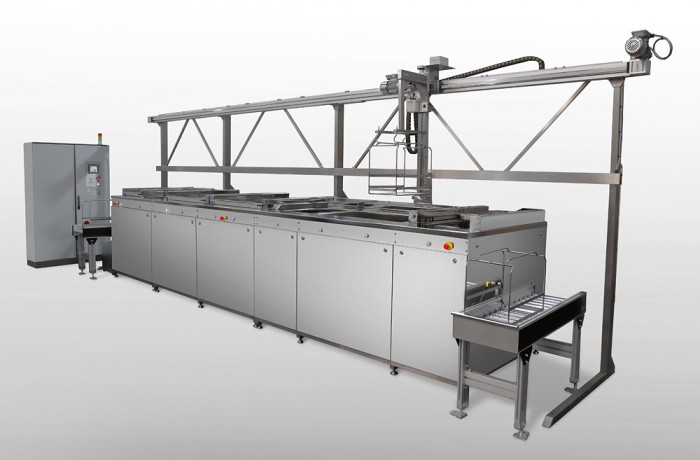 A world-renowned manufacturer of advanced technical ceramics components approached Layton Technologies Limited with a requirement to rationalise the cleaning and drying process used on ceramic components destined for the medical device industry.
A world-renowned manufacturer of advanced technical ceramics components approached Layton Technologies Limited with a requirement to rationalise the cleaning and drying process used on ceramic components destined for the medical device industry.
The client operated a time and chemistry heavy cleaning process carried out in two separate systems which were in excess of 20 years old and they had already identified the substantial risks to their operation due to increasing issues with the reliability of the ageing systems.
They had a long list of requirements for the project the main focus being that they needed to be able to manage their forecasted increased throughput, which was in excess of 10 times the current throughput, whilst at the same time ensuring that they maintained a scrupulously clean process to medical device standards and provide a high degree of safety for both the environment and operatives.
The list also included increasing yields, removing the requirement for the multiple operators of the current systems, reducing energy usage, increasing throughput and removing any need for the use of hazardous chemistries.
Layton were tasked with developing a streamlined automated process which would meet all of the above requirements.
In addition, Layton were required to ensure that due to the extremely fragile nature of the product no damage occurred to them during the cleaning and drying process.
In addition to the client’s already lengthy wish list was the ability of any new system to provide a high level of functionality to improve process control and data collection.
To achieve all the requirements placed upon Layton, the following key uncertainties needed to be resolved:
- Would it be possible to introduce a more reliable automated system with the ability to increase yields with a more effective cleaning and drying process whist reducing energy consumed?
- Could the manual intervention required for the current process be removed by automation?
- Could the process be rationalised resulting in a consistent end-product and shorter overall process time?
- How could the level of functionality be improved to provide greater process control and data collection?
Could the risk be removed to operators and the environment due to exposure to the chemicals employed.
Extensive, customer witnessed, trials were conducted to rationalise the current process and to ensure a clean and dry end product.
Due to the fragile nature of the components, tests were developed with the client to ensure that all contamination was removed, and the parts sustained zero damage.
An extensive Technical Proposal was produced which included for automated processing, complete system enclosure, automated chemical dosing and monitoring and data logging this satisfied the concerns that the client had expressed as to the overall ability of the new system to meet the requirements of the project.
Following the issue of the purchase order to Layton their in-house design team produced a comprehensive Design Documentation Package which included a general arrangement diagram, a piping and instrumentation diagram and a functional design specification, a software design specification together with a comprehensive Project Plan.
At the same time as the main system design and manufacture Layton undertook the design, development and manufacture of a specialist fixturing to hold the components and to optimise the cleaning and drying process.
The final design resulted in a new, fully automated, multistage cleaning and drying system complete with Layton’s unique 5-year warranty.

